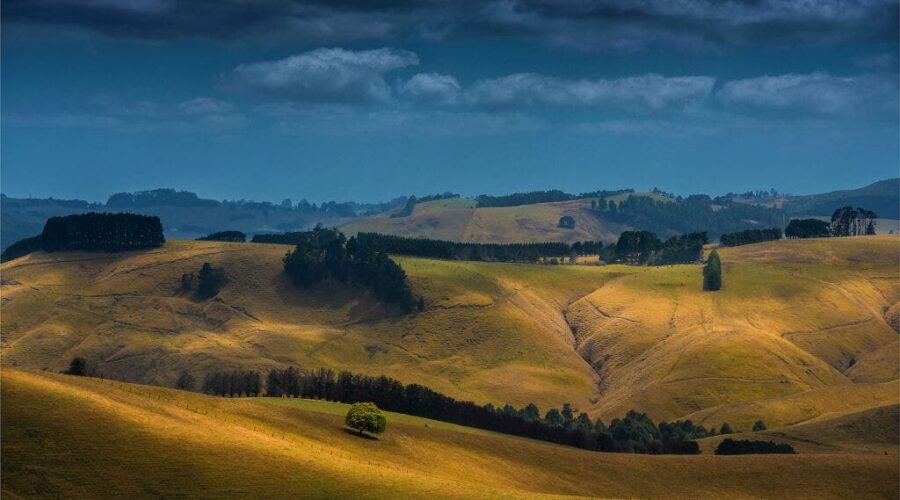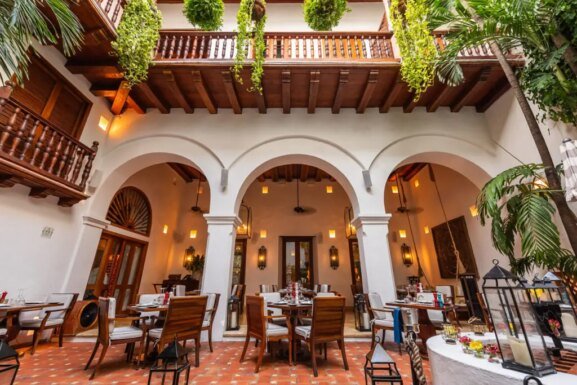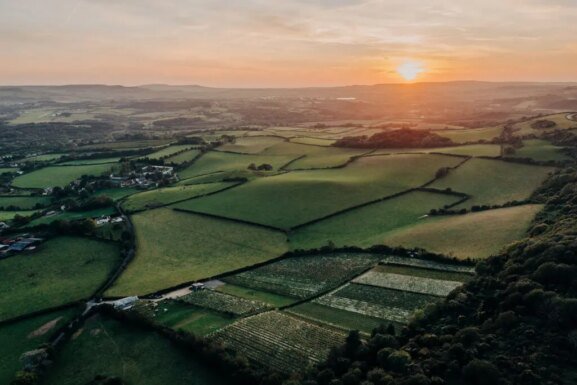The Most Expensive Australian Wine? Gippsland Pinot Noir
In 1979, Phillip Jones abandoned his telecommunications career to plant the first vines in Gippsland—a large but, until then, mostly unexplored wine region east of Melbourne. His aspiration: to make a great Australian Bordeaux.
Cabernet, however, struggled to ripen in the cool, maritime climate. Instead, it was his three rows of Pinot Noir that would ultimately make him a wine industry star with his first release under the Bass Phillip label in 1991.
Jones’s ultra-premium Pinots put Gippsland on the map. The price for his first top-tier Reserve bottling was higher than any Pinot in Australia ever. Today, it’s the most expensive Australian wine available in the U.S., priced at upwards of $1,000 USD a bottle.
But for over three decades, Jones was an outlier in a vast region with few producers and a reputation as a backwater cousin to the more glamorous Mornington Peninsula and hip Yarra Valley regions. Gippsland’s image is finally beginning to shift; in the 2023 book How to Drink Australian, U.S. sommeliers Jane Lopes and Jonathan Ross refer to the region as “one of the most exciting in all of Australia.”
The Greatness of Gippsland
The buzz is not coming from large corporate producers—they haven’t reached Gippsland (yet)—but from a steadily increasing number of experienced, well-traveled, small-scale producers who have invested their own cash in a region they believe is destined for greatness. It’s just two hours from one of Australia’s major cities, offers plentiful water in a mainly drought-plagued country, has interesting topography and ancient soils beneath land that is still comparatively affordable—honestly, it’s no wonder so many talented winemakers have bet the farm on Gippsland.
“It’s the last frontier in terms of affordable land, some really fantastic sites that haven’t been planted yet,” says Ryan Ponsford of Entropy Wines, whose small label has earned him success Down Under but isn’t yet exported to the U.S. In fact, only a small number of Gippsland wines are available Stateside—but it’s worth direct ordering, when you can.
// Create the element
var script_68d2f6d418a58 = document.createElement(“script”);
script_68d2f6d418a58.innerHTML = `
window.googletag = window.googletag || {cmd: []};
googletag.cmd.push(function() {
var adType = “leaderboard”;
var mapping;
var lbmapping = googletag.sizeMapping()
.addSize([1024, 0], [[970, 250], [970, 90], [1, 1], [728, 90]])
.addSize([728, 0], [[728, 90], [1, 1]])
.addSize([320, 0], [[1, 1], [300, 50], [300, 100], [320, 50], [320, 100]])
.addSize([0, 0], [[1, 1], [320, 50]])
.build();; // Size mapping for leaderboard ads
var medrecmapping = googletag.sizeMapping()
.addSize([1024, 0], [[300, 600],[300, 250]])
.addSize([728, 0], [300, 250])
.addSize([320, 0], [[1, 1],[300, 250]])
.addSize([0, 0], [[1, 1], [300, 250]])
.build(); // Size mapping for med rectengle ads
if(‘/39808611/article_page/article_leaderboard_1’ == ‘/39808611/article_page/article_leaderboard_1’
|| ‘/39808611/article_page/article_leaderboard_1’ == ‘/39808611/article_page/article_leaderboard_2’
|| ‘/39808611/article_page/article_leaderboard_1’ == ‘/39808611/article_page/article_leaderboard_3’) {
mapping = googletag.sizeMapping()
.addSize([1920, 0], [[728, 90]]) // >= 1920px
.addSize([1440, 0], [[728, 90]]) // 1440px-1919px
.addSize([730, 0], [[300, 250]]) // 730px-1439px
.addSize([0, 0], [[320, 100], [320, 50], [300, 100], [300, 50], [300, 250]]) // Up to 729px
.build();
} else {
mapping = adType == ‘leaderboard’ ? lbmapping : medrecmapping;
}
googletag.defineSlot(‘/39808611/article_page/article_leaderboard_1’, [],
‘div-gpt-ad-68d2f6d418a58’).addService(googletag.pubads()).defineSizeMapping(mapping);
googletag.pubads().enableSingleRequest();
googletag.pubads().collapseEmptyDivs();
googletag.display(‘div-gpt-ad-68d2f6d418a58’);
});
`;
// Append the script to the body
document.body.appendChild(script_68d2f6d418a58);
Following Phillip Jones’s lead, many Gippsland growers and winemakers are focused on Pinot Noir, which, in this part of Australia shows distinctive, bright natural acidity, fine tannins, and beautiful aromatics, from primary red fruits and florals to savory black olive and bay leaf; from earthy beetroot to ferrous nuances. Gippsland Pinots can be denser than Mornington or Yarra Pinots, depending on where they’re grown, but they’re just as elegant.
“The style of Gippsland Pinot is really distinctive, which I think is another really exciting part of the region,” says Ponsford. “When you get a good Gippsland Pinot, you know it’s from Gippsland straight away.”

Risk and Reward in a Unique Region
Pinning Gippsland down geographically, however, is a difficult task. Spanning more than 300 miles along Australia’s southeastern coastline and sandwiched between the Great Dividing Range to the north and the Bass Strait to the south, there are at least 10 different soil types across the four unofficial subregions: West, South, Central, and East Gippsland. The latter is farthest from Melbourne with warm, dry conditions during much of the year, and plays home to just a handful of wineries, like Nicholson River, Lightfoot, and Wayanga Park. Much of the growth is happening in the West and South subregions.
Closest to Melbourne and bordering the Yarra Valley, the wineries of West Gippsland nestle in the valleys of the gorgeous Strzelecki ranges, leading to the Great Dividing Range. Gravel and red volcanic loamy soils nurture vines from cutting edge, lo-fi producers like Bandicoot Run, Momento Mori, Patrick Sullivan, and William Downie.

The latter, whose ultra-sensitive winegrowing approach (and who until recently farmed the vineyards by horse and plough) predates Australia’s natural wine movement, is the only producer focused solely on Pinot Noir. With decades of winemaking experience around Victoria and 15 years in Gippsland, Downie is one of the region’s most longstanding champions and has mentored many newer producers.
Another of the region’s more established producers is Marcus Satchell, who, with his wife, Lisa Sartori, founded Dirty Three Wines. Satchell grew up in South Gippsland and claims to know every vineyard in the region. He takes advantage of the region’s lush rolling hills, extreme maritime climate (it’s one of the coolest on mainland Australia), and unique soil mixture of red clay, volcanic basalt, and granitic sandy loam to craft a large range of wines, including an electric Riesling and several tasty bubbles. But the stars are a trio of beautifully aromatic and downright sexy Pinots called Dirt One, Two, and Three, from single sites around South Gippsland.
“The potential in South Gippsland is massive,” Satchell said in early 2024. “It’s only a matter of time before a bigger company sees that and invests here.”
That reality did come true in March 2025 when ex-pat American John Ellis sold his longstanding estate, Bellvale Vineyard—the second largest in Gippsland—to the Gjergja family, owners of large Mornington Peninsula wineries Kooyong and Port Phillip Estate.
For the most part, though, Gippsland remains untouched by large corporations. Some, like William Downie, believe there’s a good reason for that.
// Create the element
var script_68d2f6d4193e8 = document.createElement(“script”);
script_68d2f6d4193e8.innerHTML = `
window.googletag = window.googletag || {cmd: []};
googletag.cmd.push(function() {
var adType = “leaderboard”;
var mapping;
var lbmapping = googletag.sizeMapping()
.addSize([1024, 0], [[970, 250], [970, 90], [1, 1], [728, 90]])
.addSize([728, 0], [[728, 90], [1, 1]])
.addSize([320, 0], [[1, 1], [300, 50], [300, 100], [320, 50], [320, 100]])
.addSize([0, 0], [[1, 1], [320, 50]])
.build();; // Size mapping for leaderboard ads
var medrecmapping = googletag.sizeMapping()
.addSize([1024, 0], [[300, 600],[300, 250]])
.addSize([728, 0], [300, 250])
.addSize([320, 0], [[1, 1],[300, 250]])
.addSize([0, 0], [[1, 1], [300, 250]])
.build(); // Size mapping for med rectengle ads
if(‘/39808611/article_page/article_leaderboard_2’ == ‘/39808611/article_page/article_leaderboard_1’
|| ‘/39808611/article_page/article_leaderboard_2’ == ‘/39808611/article_page/article_leaderboard_2’
|| ‘/39808611/article_page/article_leaderboard_2’ == ‘/39808611/article_page/article_leaderboard_3’) {
mapping = googletag.sizeMapping()
.addSize([1920, 0], [[728, 90]]) // >= 1920px
.addSize([1440, 0], [[728, 90]]) // 1440px-1919px
.addSize([730, 0], [[300, 250]]) // 730px-1439px
.addSize([0, 0], [[320, 100], [320, 50], [300, 100], [300, 50], [300, 250]]) // Up to 729px
.build();
} else {
mapping = adType == ‘leaderboard’ ? lbmapping : medrecmapping;
}
googletag.defineSlot(‘/39808611/article_page/article_leaderboard_2’, [],
‘div-gpt-ad-68d2f6d4193e8’).addService(googletag.pubads()).defineSizeMapping(mapping);
googletag.pubads().enableSingleRequest();
googletag.pubads().collapseEmptyDivs();
googletag.display(‘div-gpt-ad-68d2f6d4193e8’);
});
`;
// Append the script to the body
document.body.appendChild(script_68d2f6d4193e8);
“The big companies go to Tasmania because it doesn’t rain, and they can grow grapes in the way they grow them in South Australia,” Downie says. “When they come to Gippsland, and they’re like, ‘You get an inch of rain 52 weeks a year? No way am I growing grapes here!’ It’s wildly more expensive, [with] wildly more risk. There are no irrigated vineyards, and that freaks people out really badly.”
There may be more risk, but the reward is extraordinary. “If you are trying to make wines that tell a story of a place and you couldn’t give a shit about [scoring points] or winning trophies in a wine show, then welcome to Gippsland,” he says.
Gippsland has indeed welcomed exactly the kind of story-seeking winemakers Downie describes. Small, talented producers like Fleet Wines, Caledonia Australis, and The Wine Farm—along with Xavier Wine in Central Gippsland—are realizing the potential of this unique corner of Australia.
And, of course, there’s South Gippsland’s most famous producer, Bass Phillip. In 2020, Jones sold the winery to a group of investors who included Jean-Marie Fourrier of Burgundy’s Domaine Fourrier. Today, Fourrier’s brother-in-law Adam Francis leads the on-the-ground winemaking team from a newly built (in early 2025) winery in South Gippsland. Equipment has received an upgrade, the barrel regime has changed, and there’s a younger team in place, but the heart and soul of the iconic winery remains the same.
“Our wines have never been more precise,” Francis says. That includes, of course, Bass Phillip’s world-class Pinots.
Wine Enthusiast recommends:

Bass Phillip 2019 Reserve Pinot Noir (Gippsland)
2019 was the last vintage that renowned Pinot producer, Phillip Jones, had his hands in before selling up. And what a vintage to go out on. Lucid and detailed, this is an eye-wateringly expensive wine you could wrap yourself into like a satin robe, even without decanting. Heady aromas of red berries, mushroom, dried leaves, herbs, and flowers, there’s a touch of vanillin oak that should disappear with time. The palate shows structure and power but never overt richness. Silky, tangy fruit is brightened by well-placed acidity. Chalky, chewy tannins come in gentle at first, increasing their grip and power over time. Long and persistent: Aussie sunshine meets cool Gippsland climate. Drink now-2033. 98 Points — Christina Pickard
$862
Vinfolio

Bass Phillip 2019 Estate Pinot Noir (Gippsland)
For this reviewer’s money, BP’s Estate Pinot offers the best bang for buck. While still a special occasion wine, it’s almost as gorgeous as its elder siblings, and crafted for drinking younger. Ironically, it’s also the one that takes longest to open up. But when it does, it billows aromas of dried cranberry, cherry preserves, umami-like mushrooms, cocktail bitters and potpourri. The palate is silky with a lift of crystalline acidity, wound ultra fine, talc-like tannins. An iron fist in a velvet glove, this is long and elegant, able to age another 5-7 years but drinking beautifully right now. 95 Points — C.P.
$100
Wine.com

Bass Phillip 2019 Premium Pinot Noir (Gippsland)
The “Premium” tier from this renowned Pinot producer, while still considerably pricey, is less than three times that of the Reserve, and is also a slinky, sexy wine. First comes the primary red fruit (think cherry and cranberry), then dried spices and herbs, ground black pepper, a bit of mushroomy, vineyard floor and some toast oak nuances. It both glides and prickles the tongue with tangy freshness and textural richness. Tannins are present throughout, sturdy yet fine. Drink now or cellar for at least a decade. 96 Points — C.P.
$250
Wine.com

William Downie 2024 Camp Hill Pinot Noir (Gippsland)
A fruity, plush vintage by Gippsland standards, this delivers pure, evocative aromas of red fruit, plum, heady spice and stones. Elegant and textural with a sweet-and-savory complexity. — C.P.
$90
Bedford Wine Merchants

Patrick Sullivan 2021 Pinot Noir (Gippsland)
Lifted red berries and florals offer lightness and brightness that suggest simplicity when, in fact, it’s just the opposite. A multifaceted wine that’s sculpted, long and transparent. — C.P.
$65
Medium Plus
This article originally appeared in the April 2024 of Wine Enthusiast magazine. Click here to subscribe today!
More Australia Coverage
- Australian vineyard pests can be downright adorable—or deadly.
- Italy Down Under: How Aussie wine got its Italian accent.
- Australia’s most famous red wine is having an identity crisis.
- It’s time to start paying attention to Australian Cabernet.
- These are the best Australian wines to drink right now, according to the Wine Enthusiast Tasting Department.

From the Shop
Find Your Wine a Home
Our selection of red wine glasses is the best way to enjoy the wine’s subtle aromas and bright flavors.
The post The Most Expensive Australian Wine? Gippsland Pinot Noir appeared first on Wine Enthusiast.


